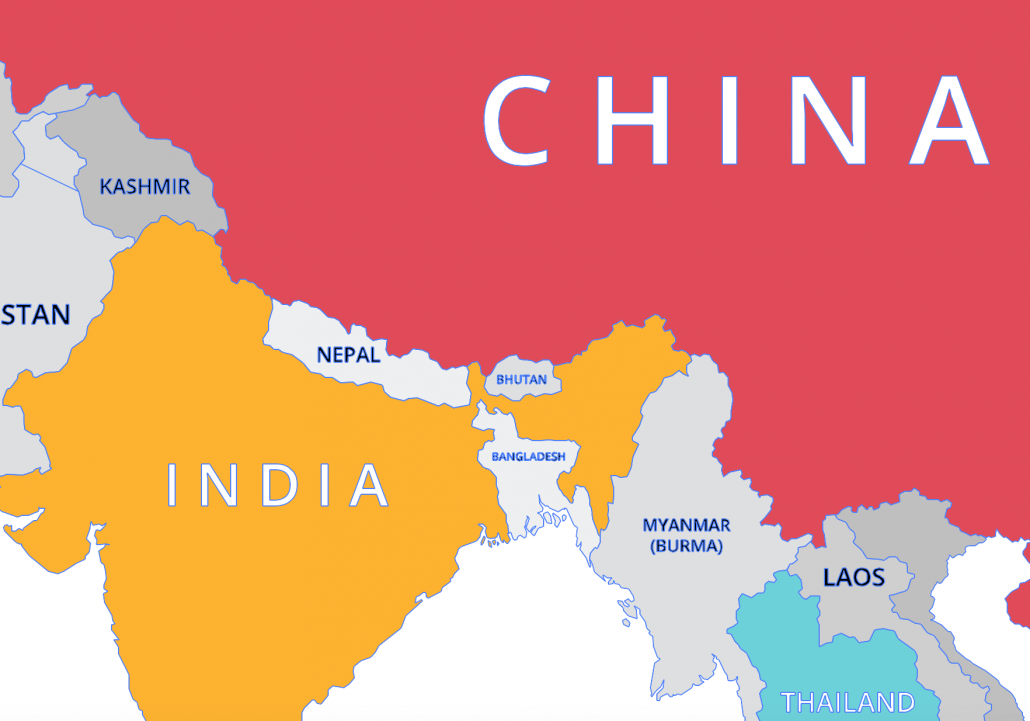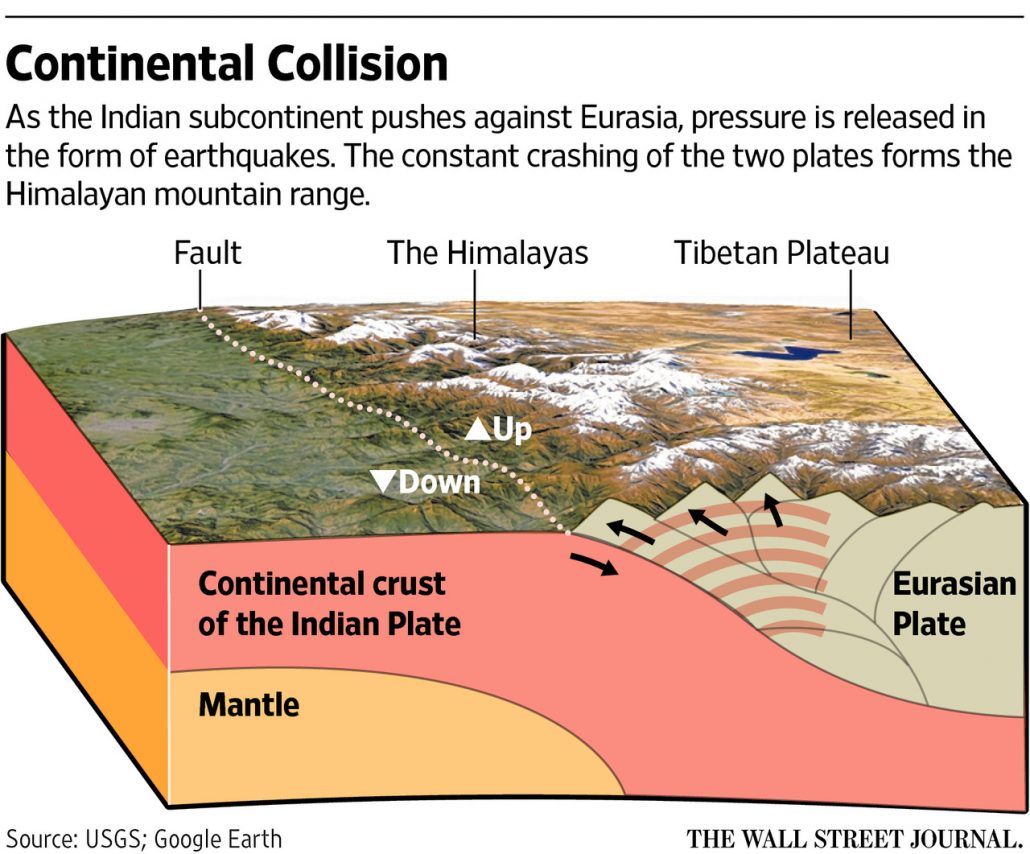Nepal Earthquake 2015
Nepal, one of the poorest countries in the world, is a low-income country. Nepal is located between China and India in Asia along the Himalayan Mountains.

A map to show the location of Nepal in Asia
At 11.26 am on Saturday, 25th of April 2015, a magnitude 7.9 earthquake struck Nepal. The focus was only eight kilometres deep, and the epicentre was just 60 kilometres northwest of Kathmandu, the capital city of Nepal. At the time of the earthquake, Kathmandu had 800,000+ inhabitants. The city is popular with tourists planning to trek the Himalayas, home of Mount Everest.
What caused the Nepal Earthquake?
The earthquake occurred on a collision plate boundary between the Indian and Eurasian plates.

What were the impacts of the Nepal earthquake?
Infrastructure
- Centuries-old buildings were destroyed at UNESCO World Heritage Sites in the Kathmandu Valley, including some at the Changu Narayan Temple and the Dharahara Tower.
- Thousands of houses were destroyed across many districts of the country.
Social and economic
- 8632 people lost their lives, and 19,009 were injured.
- It was the worst earthquake in Nepal in more than 80 years.
- People chose to sleep outside in cold temperatures due to the risk of aftershocks causing damaged buildings to collapse.
- Hundreds of thousands of people were made homeless, with entire villages flattened.
- Harvests were reduced or lost that season.
- The United States Geological Survey (USGS) estimated economic losses to be between nine per cent and fifty per cent of GDP.
- Tourism is a significant source of revenue in Nepal, and the earthquake led to a sharp drop in visitors.
- An avalanche killed at least 17 people at the Mount Everest Base Camp.
- Many landslides occurred along steep valleys. For example, 250 people were killed when the village of Ghodatabela was covered in material.
What were the primary effects of the 2015 earthquake in Nepal?
The primary effects of the 2015 earthquake in Nepal include:
- Nine thousand people died, and 19,000 people were injured – over 8 million people were affected.
- Three million people were made homeless.
- Electricity and water supplies, along with communications, were affected.
- 1.4 million people needed support with access to water, food and shelter in the days and weeks after the earthquake
- Seven thousand schools were destroyed.
- Hospitals were overwhelmed.
- As aid arrived, the international airport became congested.
- 50% of shops were destroyed, affecting food supplies and people’s livelihoods.
- The cost of the earthquake was estimated to be US$5 billion.
What were the secondary effects of the 2015 earthquake in Nepal?
The secondary effects of the 2015 earthquake in Nepal include:
- The quake triggered Avalanches and landslides, blocking rocks and hampering the relief effort.
- At least nineteen people lost their lives on Mount Everest due to avalanches.
- Two hundred fifty people were missing in the Langtang region due to an avalanche.
- A landslide blocked the Kali Gandaki River, causing many people to be evacuated due to the increased risk of flooding.
- Tourism employment and income declined.
- Rice seeds were ruined, causing food shortages and income loss.
What were the immediate responses to the Nepal earthquake?
- India and China provided over $1 billion of international aid.
- The UK provided over 100 search and rescue responders, medics, and disaster and rescue experts, as well as three Chinook helicopters for the Nepali government.
- The GIS tool “Crisis mapping” was used to coordinate the response.
- Aid workers from charities such as the Red Cross came to help.
- Temporary housing was provided, including a ‘Tent city’ in Kathmandu.
- Search and rescue teams and water and medical support arrived quickly from China, the UK and India.
- Half a million tents were provided to shelter the homeless.
- Helicopters rescued people caught in avalanches on Mount Everest and delivered aid to villages cut off by landslides.
- Field hospitals were set up to take pressure off hospitals.
- Three hundred thousand people migrated from Kathmandu to seek shelter and support from friends and family.
- Facebook launched a safety feature allowing users to indicate they are safe.
What were the long-term responses to the Nepal earthquake?
- The Asian Development Bank (ADB) provided a $3 million grant for immediate relief efforts and up to $200 million for the first rehabilitation phase.
- Many countries donated aid. £73 million (£23 million from the government and £50 million from the public), providing 30 tonnes of humanitarian aid and eight tonnes of equipment.
- Landslides were cleared, and roads were repaired.
- Lakes that formed behind rivers damned by landslides were drained to avoid flooding.
- Stricter building codes were introduced.
- Thousands of homeless people were rehoused, and damaged homes were repaired.
- Over 7000 schools were rebuilt.
- Repairs were made to Everest base camp and trekking routes. By August 2015, new routes had been established, and the government had reopened the mountain to tourists.
- In late 2015, a blockade at the Indian border was cleared, allowing the better movement of fuels, medicines, and construction materials.




